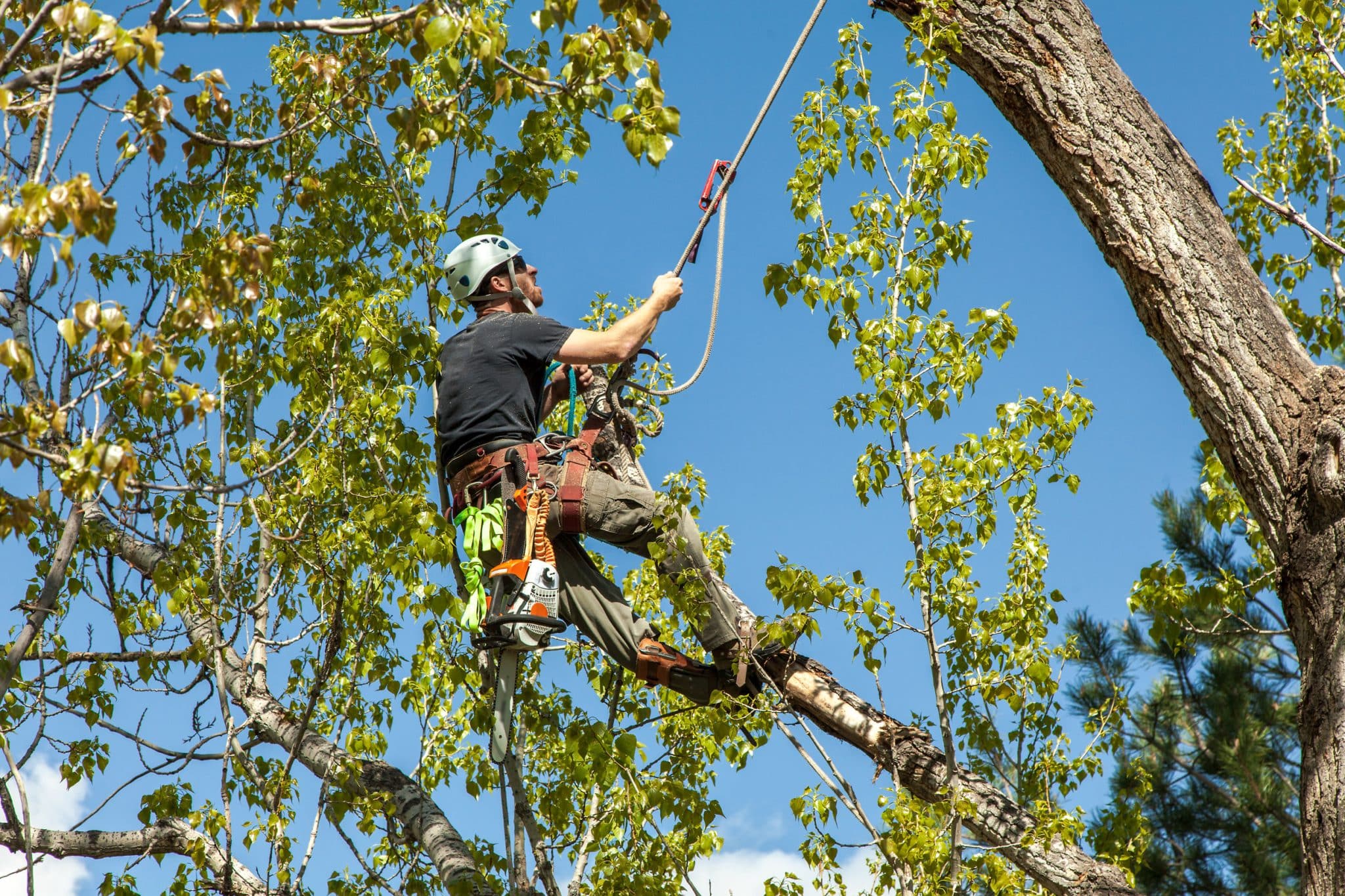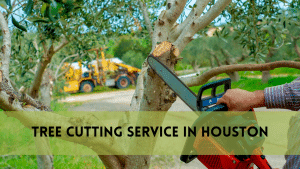Cutting down a palm tree is a task that demands both careful consideration and the right knowledge. While these majestic trees can grace our landscapes with their tropical allure, there are situations where removing them becomes a necessity. Whether it’s for safety reasons, addressing disease or infestations, or simply reimagining your outdoor space, understanding the proper method for palm tree removal is essential. In this guide, we will take you through the steps of safely and efficiently way to cut down a palm tree.
Why Is Palm Tree Removal Needed?
Cutting down a palm tree is a chore that becomes essential for a variety of reasons. One of the most common reasons is safety. Palm trees can become top-heavy as they mature, posing a risk of falling over during storms or severe winds. In such instances, removing a palm tree protects your property, automobiles, and even people.
Another reason to remove a palm tree is illness. If a palm tree becomes infested with pests or affected by a disease, it can spread to other neighboring plants and trees. Removing the sick palm tree can help prevent the spread of the disease and safeguard the general health of your environment.
Sometimes, palm trees are removed for landscaping purposes. If a palm tree has outgrown its designated space or no longer fits your landscape design, cutting it down allows you to reconfigure your outdoor space as you see fit.
In all these scenarios, safely cutting down a palm tree is essential to ensuring the safety of your property and the health of your landscape.
Tools and Material Required
- Chainsaw: A reliable chainsaw is essential for cutting through the tree’s trunk.
- Pruning Shears: Use pruning shears to trim any smaller branches and fronds.
- Safety Goggles: Protect your eyes with safety goggles to shield them from debris.
- Helmet: A sturdy helmet safeguards your head from falling objects.
- Gloves: Wear heavy-duty gloves to protect your hands from cuts and splinters.
- Long-sleeved shirt and pants: Cover your body with long-sleeved clothing to reduce the risk of cuts and scrapes.
- Sturdy Work Boots: Choose boots with reinforced toes to keep your feet safe.
How to Cut Down a Palm Tree?
To cut down a palm tree you need to do the following steps:
Analyze the Situation
Before you begin, carefully examine the circumstances. Determine the tree’s height, location, and proximity to structures, electrical lines, or other potential hazards. If the palm tree is exceptionally tall or close to any structures, it is strongly advised to engage a professional tree removal service to avoid potential problems.
Get the Required Permits
Check local regulations and secure any required permissions for tree removal. Certain regions may require licenses to remove palm trees, especially if they are protected or part of a conservation area. Compliance with local legislation is essential.
Clean Up the Area
Clear the area around the palm tree of any potential barriers such as furniture, vehicles, or outdoor equipment. To avoid accidents and injuries, create a safe zone with a radius at least twice the tree’s height.
Choose the Cutting Technique
Different palm trees may necessitate different cutting strategies. decide the sort of palm tree you’re working with because this will determine the cutting procedure. Date palms, coconut palms, and queen palms are common palm tree kinds, each having specific traits that influence the removal procedure.
Put safety first
Before making any cuts, make sure you have all of the appropriate safety equipment. To reduce dangers, wear safety goggles, a helmet, gloves, and proper clothes. During this process, safety is of the utmost importance.
First, make a notch cut.
The first cut, known as the “notch cut,” is critical in directing the fall of the tree. This incision should be made on the side of the tree toward the desired direction of fall. Make a one-third-way horizontal cut across the trunk. This first cut serves as a guide for the controlled fall of the tree.
Felling Cut
Make a felling cut on the opposite side of the tree. This cut should be slightly above the notch’s bottom and slant downward to meet it, making a 45-degree angle. The felling cut directs the controlled fall of the palm tree.
The Controlled Fall
As you make the felling cut, the palm tree will begin to tilt in the desired direction. Keep a safe distance from the falling route, as palm trees can be unpredictable. Stay aware and prepared to move immediately to a safe distance if required.
Remove the Stump
After the tree has died, you will be left with a stump. Remove it by cutting it as close to the ground as possible. If the stump is too enormous to manage yourself, consider hiring a stump grinding service to quickly remove the remaining foundation.
Clear Up
The next step is to clear the area of any debris, branches, or palm fronds that may have fallen during the removal procedure. Dispose of the leftovers in accordance with local waste disposal standards.
When to Cut Down a Palm Tree?
Knowing when to chop down a palm tree is critical for maintaining a safe and appealing landscape. Several scenarios may call for the removal of a palm tree.
First and foremost, safety is critical. If a palm tree becomes unstable due to disease, pests, or storm damage, it should be removed immediately. An unsteady palm tree can pose major risks, with the possibility of falling branches or possibly the entire tree, causing property damage or injuries.
Second, aesthetics and landscaping factors come into play. If a palm tree has exceeded its assigned place or no longer complements the landscape plan, it may be time to remove it. This might be a calculated option to improve the appearance of your outside space.
Furthermore, eliminating a palm tree that is highly damaged or infested helps keep the problem from spreading to other trees in your yard. Early diagnosis and early removal can maintain your landscape’s overall health.
FAQs about Palm Tree Removal
1. Can I cut down a palm tree on my own?
You can cut down a palm tree on your own if you have the required tools, knowledge, and safety equipment. However, for larger or more difficult removals, it is best to engage a professional tree removal service to ensure safety.
2. Do I need permission to remove a palm tree?
Permit requirements vary by location. It is critical to check your local legislation, as some locations may require licenses for tree removal, particularly for protected palm tree species. Compliance with local legislation is critical.
3. How do I tell what kind of palm tree I have?
Identifying the type of palm tree is critical since it determines the cutting procedure. Date palms, coconut palms, and queen palms are all common palm tree kinds. You can identify trees by consulting a local arborist or using online tools.
4. What should I do if the palm tree is near electricity lines or structures?
If a palm tree is in close proximity to electricity lines or structures, it is strongly advised to call a professional tree removal service. Dealing with such trees can be quite dangerous, and only experts are qualified to manage these situations securely.
5. Can I utilize the wood from the cut palm tree for anything?
Palm tree wood can be recycled for a variety of purposes, including furniture and art. Consider recycling or upcycling the wood instead of throwing it away, since it can be used for both beautiful and functional purposes.
Conclusion
Cutting down a palm tree requires attention to detail, the correct tools, and a strong focus on safety. Following the proper processes is critical, whether for safety, disease prevention, or landscaping considerations. Always emphasize safety by wearing the appropriate protective gear and assessing the circumstances. While smaller palm trees can be managed by homeowners, for larger or more involved removals, speaking with a professional tree removal agency is the best option. Palm trees are unpredictable, and professionals are trained to manage them properly. By following the appropriate measures, you may easily remove a palm tree while protecting your property and the well-being of others around you.





